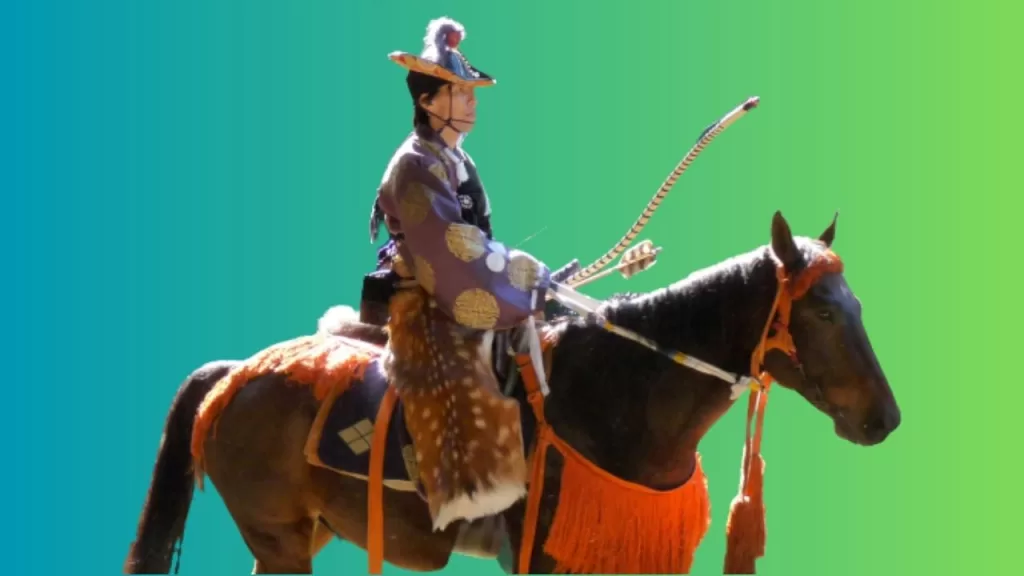Meiji-Jingu Yabusame
Yabusame Horseback Archery Held at Meiji Jingu Shrine
The Meiji Jingu Shrine in Harajuku, Tokyo, served as the grand stage for a captivating spectacle of Japanese Horseback Archery, or Yabusame, on November 3rd. This event took place as part of the annual Autumn Festival, attracting enthusiastic spectators each year. The shrine has hosted many such events in memory of Emperor Meiji, and this particular demonstration harks back to an ancient ceremony conducted centuries ago.
Witness the breathtaking precision and ancient Tradition of horseback archery at the Meiji-Jingu Yabusame, one of the thrilling Tokyo events in November, where skilled archers showcase their marksmanship while galloping through the sacred grounds of Meiji Shrine, creating a mesmerizing spectacle that embodies the rich cultural heritage and spiritual essence of Japan’s capital city.

Key Historical Aspects of Yabusame
Yabusame is an integral part of the Japanese martial arts heritage. Culminating during Japan’s Kamakura period (1185-1333), it was Shogun Minamoto no Yoritomo who mandated rigorous training in this art form to perfect his Samurai’s mastery.
Yabusame requires great timing, balance, and concentration. It involves warriors galloping at maximum speed along a track, aiming to hit the plate-like targets placed along the course with arrows. Those skilled enough to hit all targets display a rousing feat to watch.
Following Tradition
Despite modern shifts and influences, two major schools remain dedicated to carrying on the Tradition of Yabusame: The Ogasawara-Ryu and its rival, Takeda-Ryu. They both follow a compiled set of rules called “Yabusame-Shaho,” which preserves the core principles of this refined martial art.
Both these schools fall under the umbrella organization ‘The Japan Equestrian Archery Association,’ which actively works to keep this historic sport alive for future generations.

Event Details
The event at the Meiji Shrine starts with The Shutsujin or ‘going to battle’ procession, where archers gather and march eloquently to the shrine. Other ceremonies follow this, including Kaburaya Hoken Kanmon Sojo no Gi and Tenchochikyu no Shiki.
One of the most exciting parts of the contest takes place when competing among the best three archers: hitting a round target 17 cm in diameter filled with confetti; if struck forcefully enough, it bursts into a multicolored display – marking an immense achievement.
Witnessing Yabusame
Given its historical richness and excitement-filled proceedings, Yabusame continues to attract large crowds whose shared fascination transcends cultural borders. The event at Meiji Jingu especially draws dignitaries and heads of state from across the globe, including renowned personalities such as former Presidents Bush and Obama.

Preservation Attempts
In this era where sports are becoming more technologically reliant and mechanized, demonstrations such as these underscore an often forgotten but age-old relationship between man and horse- highlighting finesse in movement, precision in aim, and dedication towards perfection.
Despite it losing its popularity back in the 16th Century thanks to the introduction of firearms in Japan, efforts by various associations have allowed such traditions to survive and thrive in contemporary times.
Kisha discipline
It is noteworthy that aside from Yabusame, other disciplines are included under Kisha or horseback archery, such as Kasagake and Inuoumono. While Kasagake developed as a game for practicing technical elements of horse archery, Inuoumono—or dog shooting— started as military training but became popular amongst Japanese nobility before being banned around the end of the 16th Century. There are still traces of these sports within elements of contemporary Yabusame demonstrations.
Such competitions as held at Meiji Shrine serve not only as eye-opening windows into Japan’s rich past but also embody timeless skills and spiritualities that remain relevant today, capturing audiences worldwide.
Witness the breathtaking Meiji-Jingu Yabusame while surrounded by the mesmerizing beauty of Rikugien Garden Autumn Illumination.